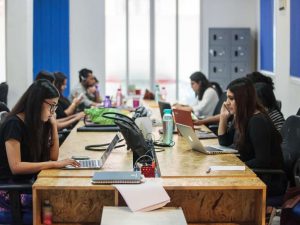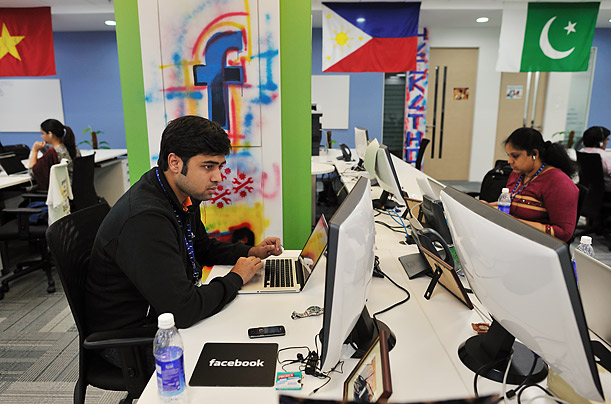Trends have a peculiar habit – they keep changing! And, the same goes for workplaces too.
Several workplace experts believe that the performance of employees at workplaces, their behaviour, and the office structure, should never be kept constant and frequent changing will help keep the good juices flowing. According to business leaders and human resource experts, there are 5 key factors or the trends that should always be checked, especially in 2018, to run your office in a better way.
But why follow the trends? When organizational goals are being met, is there really a need for changes in the office decorum? According to few types of research, it is been found that organizations do not achieve the maximum performance that they aim at, and are satisfied just by the half of it. Which shouldn’t be the scenario; et al. There are always areas in your workplace which causes hindrance to your growth potential. Each of which should be marked as “alarm bells”.
These trends provide a business owner with opportunities to improve their office environment, and most of the times it shows good signs on the employees too. Currently, people are working in offices that are not capable to fulfil their basic workday needs, and sometimes even obstruct the ability of the individuals to create value proactively. And, thus meet the organizational goals.
So, here are five awesome workplaces trends that will surely work for you:
Workplace for productivity – According to the norms, one in every four workplaces tend to fall as employees don’t see any sign of personal productivity. If you ask the people, more than half of a workforce would agree that their workplaces are designed to provide the optimum working environment. And, there will be about 20-30% who would disagree with the fact; while the remaining lot will choose to stay neutral.
It is important to note that employers failing to understand the needs of their employees with regards to factors like creativity, office-noise, the crowd on the floor, and collaboration. In order to create a workplace that performs extremely well, all these phases that put down free movement of knowledge need to be carefully understood.
Noticing the age factor – The prime focus of the organizations these days is how to integrate the new  generations into the workforce. The disagreeing lots of people mentioned above mostly consist of young people who are fresh out from their colleges. These segments are small compared to the rest of the workforce and have simpler work profiles. This is the reason why they disapprove of the amenities provided at the workplace. Majorly because they need time to settle in and less because of the need of finding an optimum work scenario.
generations into the workforce. The disagreeing lots of people mentioned above mostly consist of young people who are fresh out from their colleges. These segments are small compared to the rest of the workforce and have simpler work profiles. This is the reason why they disapprove of the amenities provided at the workplace. Majorly because they need time to settle in and less because of the need of finding an optimum work scenario.
The main attention, however, should be given to those in their mid 30’s and 40’s. This age band consists of people with a huge array of distinctive work to be done. Likewise, the ones in their late 40’s and 50’s have the most complex work activity patterns. Because of the nature of their work, offices need to provide good infrastructure support. Not just in the terms of utility, but aesthetics as well. These two ages brackets account for the majority of the workplace population, therefore presenting the greatest opportunity and the highest risk.
Nothing new can be guaranteed – Workplaces have the challenges of creating an effective environment. Which is why organizations today are heavily investing time in finding well-furnished office spaces, refurbishing old-built offices, and even implementing ideas to create a distinctive identity with custom-built workspaces. However, the success rate for creating an ideal workplace is still at a growing phase.
The organizations which let its team be at its best are the ones operating at their full potential. Therefore, workplaces should not be seen as the operational requirement of an organization and keep its people at the centre. An employee-centric workplace paves way for more success. Take companies like Google for example, which is often touted as the “best places to work in”. It is totally people-centric, understands the need of its employees, even if it’s about the interns.
Go for the openly laid office – One of the key performing factors in employees is the office layout. And, workplaces with open layout are where people work the best. An open-plan office setting sees people working for about 92% of their potential – which is incredible. Imagine the productivity they bring in. So, those organizations finding an open plan faulty aren’t factually correct. Organizations should recognize the benefits of open plan settings as they promote activities like mutual-learning, enhancing skills, impromptu group meetings, and great social interaction.

(open layout as shown above works great for startups and small enterprises)
Flexible working options – Organizations are increasing depending on the flexible approach to the design of their office. The design should be in such a way where it supports remote workers or people who want flexible working options. Co-working spaces or shared offices are built on the same idea, where people have seen not just a relaxed work atmosphere but the rise in profits and skills too.
Giving your team members a work-from-home in between sometimes or designing the office in a way that it gives area to work in peace is hugely favourable. Remote working hours is also supported by many, thus making the workforce agiler.
With these trends of creating effective workplaces, offices of today are working toward making a better human resource. Office design and workplace activities have gone a long way in creating mind-blowing workplace trends that have benefitted organizations immensely.


